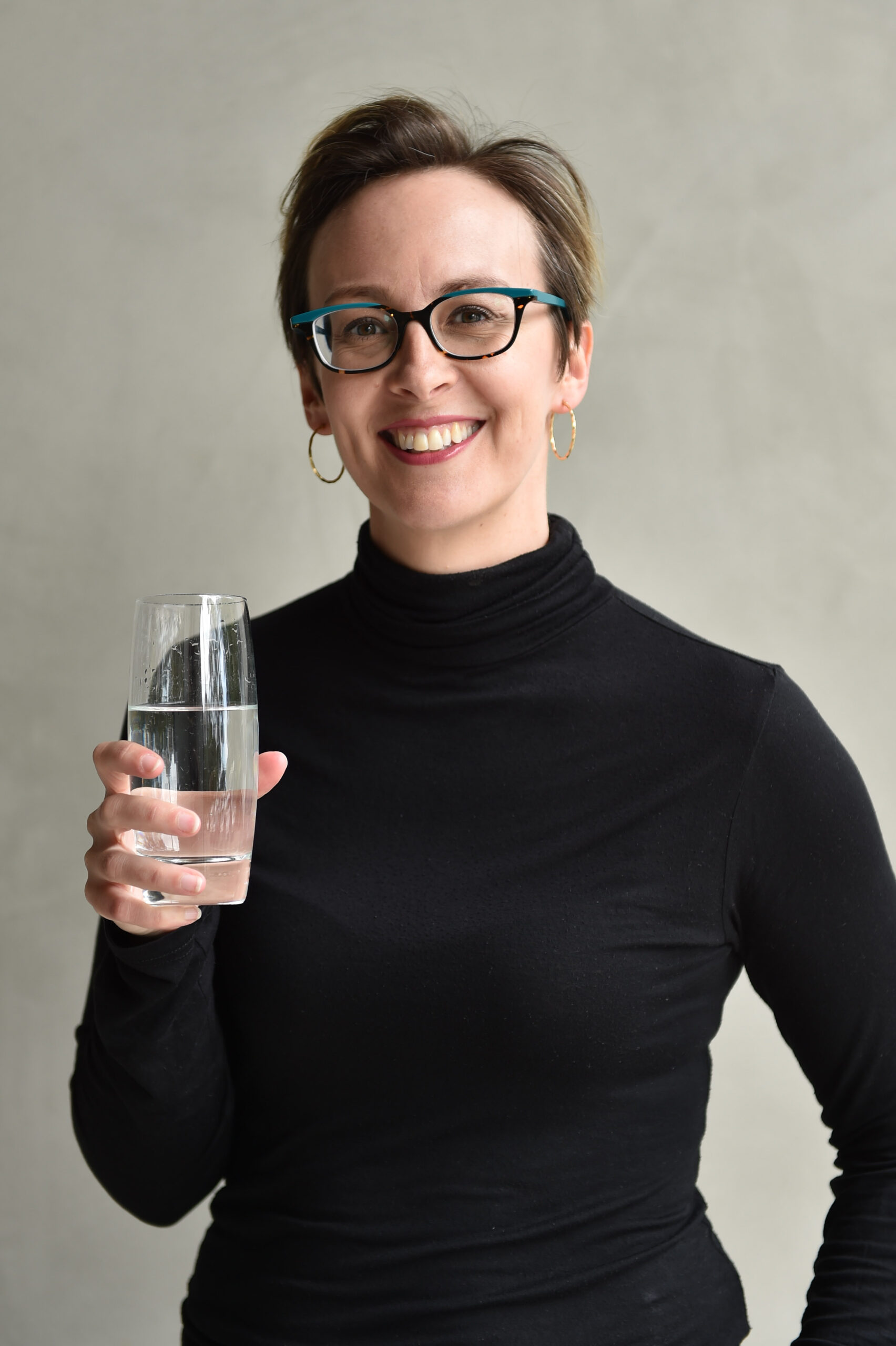With the necessity to wear face masks at many places of employment, it is essential to ensure the best vocal care is maintained to care for your voice. This is especially true for teachers and others who are talking a lot, whilst wearing their mask, and depend on effective communication throughout the work day.
In this video, Jenny discusses:
- Healthy Voice Hints (0:36)
- Aerosol Generating Procedures (2:45)
- Caring For Our Voice When Wearing A Mask (3:47)
- General Voice Care Tips (14:20)
If you are experiencing pain or soreness, or a change in your voice that has lasted more than 10 days, rest your voice where possible, keep well hydrated and see your GP. A referral to a Certified Practising Speech Pathologist with a special interest in voice, will be able to give you vocal coaching strategies and techniques to prevent damage and improve the quality of your voice.
Call Now To Make An Appointment
Jenny is a Certified Practising Speech Pathologist, in Brisbane, with a special interest in voice.
How To Care For Your Voice When Wearing A Face Mask – Transcript
Hi there, my name is Jenny Matthews, Speech Pathologist, coming to you virtually from Bayside Voice Centre, located in Cleveland at the Redlands Specialist Centre. Today we’re going to talk about how to care for your voice while wearing a mask.
Teachers particularly are just new to the situation of having to be in the workplace while speaking all day with their voice. And we want to avoid voice vocal fatigue effort and strain.

Healthy Voice Hints (0:36)
Healthy voice hints that I have on a poster that you can ask for via Facebook or email on our website, to get your own glossy A3 copy of this poster.
Hydration
We want to start with sipping water. That’s so that we can lubricate our vocal folds so that they’re not rubbing together with friction, it improves the ease of their vibration.
Avoid throat clearing
We also want to avoid throat clearing, because when we throat clear or cough, we’re slamming together our vocal folds in a high impact way. And if we keep doing that, that’s going to inflame the edges of our vocal folds.
Avoid whispering
If we need to speak softly, because we feel the need that we have a sore voice that we want to speak softly, we don’t want to whisper because that adds strain, and it makes it even worse. So we just reduce the volume like this in our effort level.

Use amplification
However, if we want to be louder, then it’s a good idea to use amplification. So if you’ve got a loud Halo or a microphone available, that’s really useful.
Rest
If you are feeling unwell, it’s important to give your voice a rest and not keep soldiering on. Because otherwise you can potentially cause more damage. And if your vocal folds, you know voices, felt sore or pain, you’ve had a change in how it sounds for more than 10 days, it’s time to have a chat with your GP.
Address reflux
And the final healthy voice hint here is to address reflux. Now, up to 50% of people who see us with a voice disorder have an underlying reflux issue. So if you imagine that acid coming back up your oesophagus, and sitting on the delicate tissues of your vocal folds, that’s not a good thing.
Aerosol Generating Procedures (2:45)
So next we’re going to talk about, in specific relation to COVID-19, aerosol generating procedures, AGPs. So these are things where essentially the droplets of germs that are all located in this part of your body, get out and get all over everybody, which is why we’re wearing masks to stop the spread. So coughing and sneezing we’re aware of already from media information, but also things like singing and projecting loudly and exerting yourself and puffing during exercise is going to generate these aerosols with the droplets in the air that can spread germs that we’re trying to avoid.
Caring For Our Voice When Wearing A Mask (3:47)
Okay, so what do we do? We want to be like Dave.
Those who are in our local teaching area of the Redlands may know Dave, he is a local teacher. And from his excellent posture, we can see that he is well placed to project his voice safely. However, if he’s wearing a mask, there are a few things that we need to implement.
Posture
Because put it plainly masks muffle our voice. And if it’s muffled, we may think that no, it’s not a muffin. We’re actually wanting to stop the muffle. So just like Dave in our picture, we want to keep our posture straight and stand up tall. I’m going to stop sharing for a moment. So I can just demonstrate our lungs here and our breathing tube goes all the way up. We want to keep it nice and straight. Because if it’s bent over or hunched, anything like that, our breath flow isn’t going to be very efficient. And as we make voice, it’s going to be harder for us to do that. Okay, so want to think tall. And the other thing we want to do is actually switch on the back anchors by drawing down our shoulder blades. So that were nice and tall. I’m going to go back to my other screen now.
Use the power muscles
Okay, the next thing we want to do is think about where the power of our voice is coming from. Our tummy muscles and our diaphragm are really big muscles compared to the teeny tiny voice muscles in our larynx. So it makes more sense that if we want to increase our volume and intensity, that we use those bigger muscles to create that volume, and use those that power coming from those large muscles instead of trying to push from our teeny tiny voice, larynx, laryngeal muscles.
Use an amplifier
The other thing if you need to be loud, particularly when there’s a lot of background noise, or if you’re in a large space, is to use an amplifier. So a lot of schools, hidden in a cupboard somewhere, will actually have a personal amplification device. We have this one which is the Chattervox, available for personal hire. But you can also ask your school or your regional office if they have any available. So these are a good idea, because it’s going to take that effort away from trying to project and get over background noise because it does the work for you.
Call Now To Make An Appointment
Jenny is a Certified Practising Speech Pathologist, in Brisbane, with a special interest in voice.
Slow down and enunciate
Next point is that we want to slow down our rate and enunciate. Okay, so when we think about our masks, what’s happening is that they are covering our articulators of our jaw and lips being able to move as freely as they are used to. And there’s often not a lot of space in there. So I’m just going to demonstrate to you the difference between a few different masks can make and I’m going to first start my sentences with no enunciation just a regular speaking, and then I’m going to over enunciate as I go.
My name is Jenny Matthews speech pathologist at Bayside Voice Centre. I help to optimise people’s voices.
That’s with our cough mask.
This next mask has a clear square so that we’ve got more cues to see the lips moving.
My name is Jenny Matthews, Bayside Voice Centre, I help people to optimise their voices.
One issue that we do find with this one is that it’s still fogs up. So just like with your glasses, you might need to pop some spray on there so that it doesn’t fog up.
And the last one is our medical type mask.
My name is Jenny Matthews from Bayside Voice Centre. I help people to support and optimise their voice.
Feedback that I’ve had from other workshops that I’ve done, now that while the cloth ones are sustainable, and add personality, they do seem to amplify the muffled quality and that the medical mask often has a little bit more space that you can create by puffing it out in front of the mouth. And you’re able to really improve the clarity.
General Voice Care Tips (14:20)
Okay, now these are some general voice healthy habits.
Relaxed throat muscles
So we want to make sure that all of our laryngeal muscles on the outside of our throat are nice and relaxed so that we’re not tensing up and creating this tense, strained quality. So the first tip here is great for the morning in the afternoon when you’re feeling a bit tired, and that’s the yawn. So when you yawn the whole purpose of a yawn is to increase the oxygen flow, the amount of oxygen that your body gets. And when you yawn, the muscles expand and create a wider airway. Okay, so if you embrace your yawn, open your mouth really wide lift your tongue up and it creates a lot of nice space at the back of your throat.
So that’s a way of stretching muscles on the inside. Another way to stretch out and release tension in your vocal tract is to do a lip trill. And this is quite a handy one to do while you are wearing your mask because it is certainly an aerosol generating procedure. So (lip trill). As we do our lip trill doing a glide up and down the scale, we want to really tune into the resonance and buzzy, vibrating feeling happening at the front of your face, because we’re moving the effort away from your throat, and using the space in your space in your face. Okay, so (lip trill).
And this is a nice one that you can do on the way to and from work in the as your warm up. Okay, our next port of call is hydration.
Good hydration
So it’s always good to regularly sip water so that you are essentially providing your vocal folds with lubrication. Just like in winter, we want to keep our lips nice and moist, so they don’t get cracked. And we want our vocal folds to be able to vibrate easily without any friction.
So when we drink water that’s going all over all over our body and hydrating ourselves. But we can also be a little bit more targeted and give our vocal folds an extra boost by using a steamer so hot shower, or a steamer or nebulizer, like this way you fill it with warm water and it goes directly over your nose and mouth to inhale that steam.
Wear a photo of yourself
Okay. And thanks to Wiseman and colleagues, earlier this year 2021 found that wearing a postcard sized photo, like a selfie actually helps to facilitate better communication, and it improves the listener’s perception of the speaker. So you can see here that I’ve got a picture of myself smiling, and so that when my mouth is covered by the mask, particularly in a classroom situation where you are wanting to maintain that positive interaction, students have still got that positive presentation to be able to focus on.
So thanks for taking the time to watch this video about how to care for your voice while wearing a mask. For more information on how to care for your voice, you can go to the website, baysidevoicecentre.com.au and our Facebook page for regular tips and updates.
Transcribed by https://otter.ai



